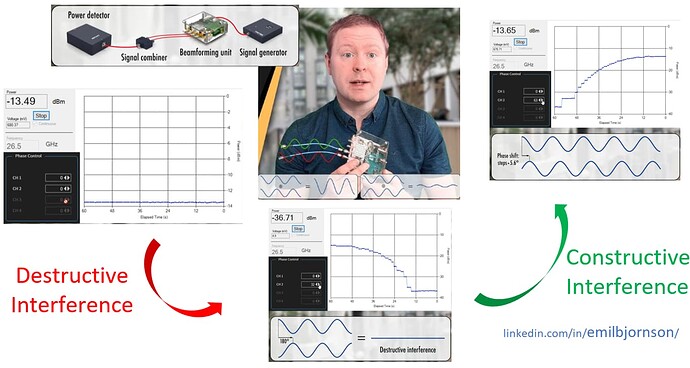When copies of the same radio-frequency signal are added up over a communication channel, they can either reinforce or cancel each other.
These phenomena are called constructive and destructive interference, respectively.
A communication channel incurs arbitrary phase shifts between the copies, but an efficient multi-antenna system is designed to add additional phase shifts to the signal copies at the transmitter or receiver, to ensure constructive interference.
In the third video of this series, Prof. Emil Björnson demonstrates these phenomena experimentally and compares the results to theoretical formulas.
The experiments are carried out by sending 26.5 GHz signals over cables, while the fourth video will demonstrate how the same principles enable adaptive beamforming over the air.
Credits: ![]()
YouTube: ![]() Constructive and destructive interference [Part 3, Fundamentals of mmWave communication] - YouTube
Constructive and destructive interference [Part 3, Fundamentals of mmWave communication] - YouTube
